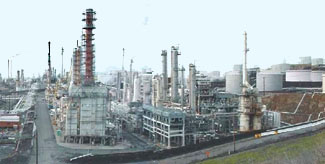Chromobacterium violaceum: Difference between revisions
imported>Tai V. Ly |
imported>Tai V. Ly |
||
| Line 8: | Line 8: | ||
===Higher order taxa=== | ===Higher order taxa=== | ||
''' | '''DOMAIN'''-Eubacteria<br /> | ||
''' | '''PHYLUM'''-Proteobacteria<br /> | ||
''' | '''CLASS'''-betaproteobacteria<br /> | ||
''' | '''ORDER'''-Neisseriales<br /> | ||
''' | '''FAMILY'''-neisseriaceae<br /> | ||
[Others may be used. Use [http://www.tolweb.org/tree/ Tree of Life] link to find] | [Others may be used. Use [http://www.tolweb.org/tree/ Tree of Life] link to find] | ||
Revision as of 20:18, 1 April 2008
Articles that lack this notice, including many Eduzendium ones, welcome your collaboration! |
Classification
Higher order taxa
DOMAIN-Eubacteria
PHYLUM-Proteobacteria
CLASS-betaproteobacteria
ORDER-Neisseriales
FAMILY-neisseriaceae
[Others may be used. Use Tree of Life link to find]
Species
Chromobacterium C. violaceumFile:Http://dtp.nci.nih.gov/timeline/images/subs/success stories/SS 5/SS 5 72dpi.jpg
Description and significance
Describe the appearance, habitat, etc. of the organism, and why it is important enough to have its genome sequenced. Describe how and where it was isolated. Include a picture or two (with sources) if you can find them.
Genome structure
Describe the size and content of the genome. How many chromosomes? Circular or linear? Other interesting features? What is known about its sequence? Does it have any plasmids? Are they important to the organism's lifestyle?
Cell structure and metabolism
Describe any interesting features and/or cell structures; how it gains energy; what important molecules it produces.
Ecology
Describe any interactions with other organisms (included eukaryotes), contributions to the environment, effect on environment, etc.
Pathology
How does this organism cause disease? Human, animal, plant hosts? Virulence factors, as well as patient symptoms.
Chromobacteria do not usually cause diseases in humans, the first C. violaceum infection reported was in 1927 from Malaysia, and approximately 150 cases reported worldwide, such as Asia, USA, Australia, and Africa (Martinez & Mattar, 2007).
Application to Biotechnology
Does this organism produce any useful compounds or enzymes? What are they and how are they used?
Current Research
Enter summaries of the most recent research here--at least three required
